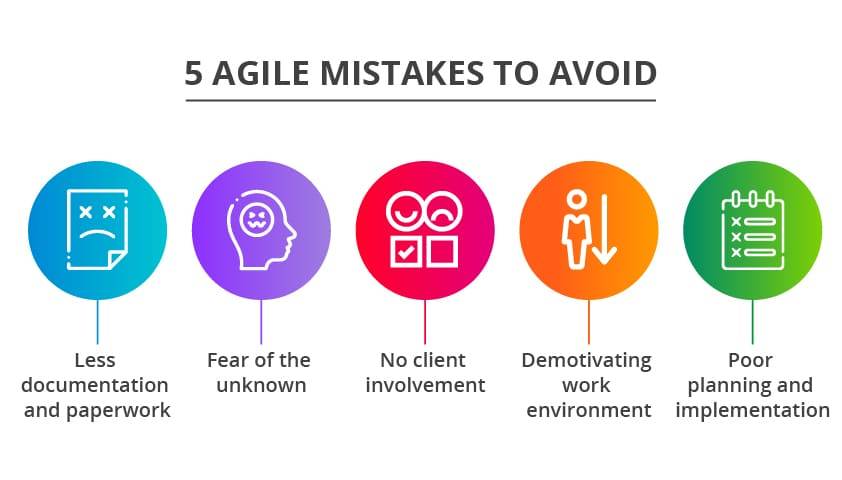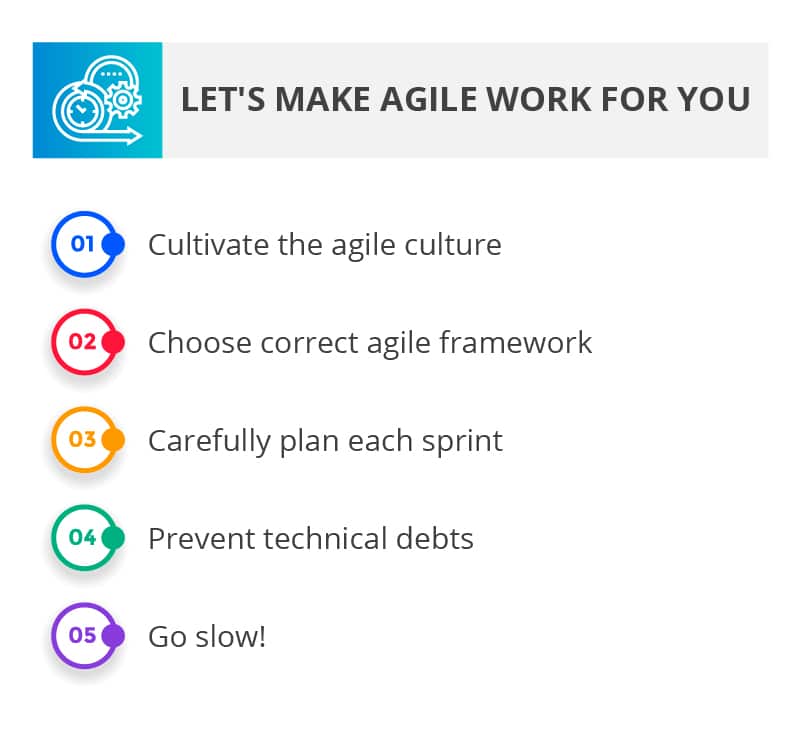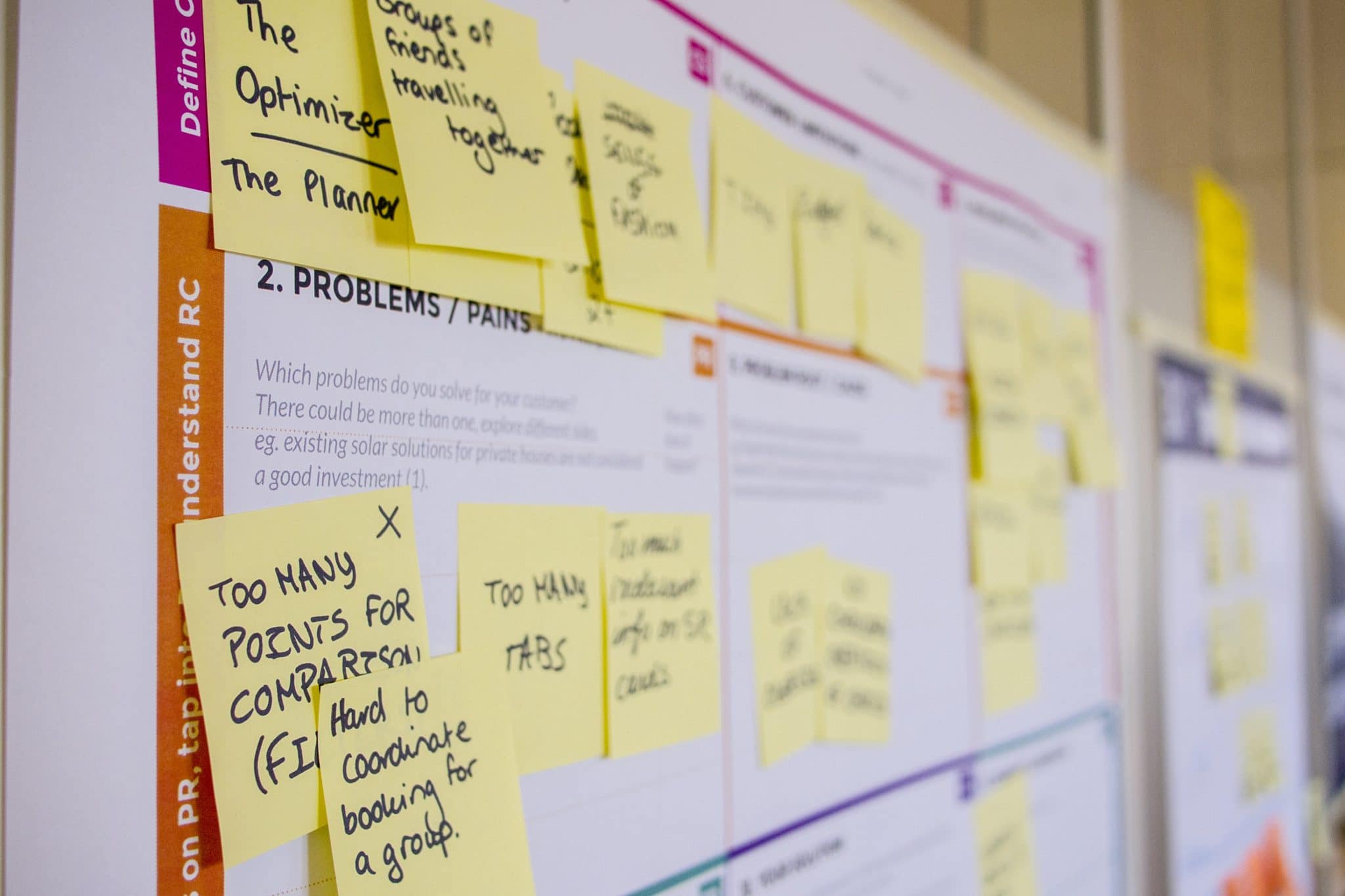Summary: Agile implementation, if done properly, tracks team performance, assured collaborations, and assesses the product quality. However, overdoing agile and leaving loopholes in the software development cycle is not going to bring about the expected results. Identify your Agile mistakes and solutions.
In the race to become more agile, organizations are rushing to employ the Agile software development model. However, doing this without careful implementation might demotivate the workforce, degrade performance, and interrupt customer experience.
Agile is synonymous with ideation and innovation. More than 86% of organizations have adopted the Agile environment worldwide. Despite the number, many organizations are led astray from the real Agile Manifesto and are making their daily software development routines more tedious.
So, let’s find out if you are in the right direction or if you have lost track amidst a blizzard of buzzwords.
What is the purpose of going Agile?
Agile software development was introduced in 2001 with a set of four critical principles. These standards were presented to improve software development processes and results:
- Individuals and collaborations instead of procedures and tools
- Operational software instead of detailed documentation
- Customer interaction instead of contract discussion
- Responding to change requests instead of following a plan
As per common observations, companies claiming to follow the Agile mindset have been widely deviating from this set of standards.
It is, therefore, necessary to trace the mistakes and identify what steps to follow for a successful Agile environment.
5 Agile mistakes to avoid
You need to bring value and quality out of your agile environment, but doing it wrong can mislead the entire agenda. Your Agile process might be going awry; track the problem areas below for a deeper analysis.

Less documentation and paperwork
According to an ‘Agile Myth’, there is less documentation in Agile. Most product owners and their development teams confuse this myth with reality. This is merely a false notion, as Agile asks for more attention to software delivery and not to take away documentation altogether. Since most product requirements are specified during the development phase, the documentation is often less descriptive. This depicts that new members in the agile team shall always lack a crucial understanding of the product requirements and the performance goals. Therefore, lack of documentation creates ambiguities among the team members and eventually adversely affects the product delivery.
The fear of the unknown
In some cases, developers cannot quantify the degree of effort required for software delivery. This occurs during the earlier SDLC stages when the product is complex. Professionals that are new to the agile world cannot be highly predictable about the situation. Thus, anonymity triggers frustration which leads to malpractices and ultimately lost customer satisfaction.
No client involvement
The Agile principles require close communication and involvement between the service provider and the client. This is deemed as a rewarding process but can demand serious commitment throughout the SDLC to ensure a successful product shipment. Therefore, the clients must know how to communicate business expectations and assist the software development process. Otherwise, insufficient understanding and communication can impact the entirety of software quality.
This lack of customer participation subsequently points fingers at the development team’s credibility for not producing quality work.
Demotivating work environment
It is perceived that Agile encourages good performance in developers and testers. But, when Agile goes extreme, the total motivation of the team declines.
For example, procedures and tools are still the most trusted work drivers over individuals and collaborations. Companies do not allow their employees to question the Agile practice and leave less room for ideation and experimentation.
Therefore, overdoing Agile and relying too much on processes and tools will reduce the value of humans; eventually less interactive sessions will drop brainstorming and work autonomy. The software development team will not feel a sense of potential, participation, and purpose; instead, they will feel emotionally drained or lethargic towards work. They stop to adapt, evolve, learn, and be productive at work.
Poor planning and implementation
Only following a plan often gets mistaken as “don’t have a plan.” For example, if an Agile team does not understand the bigger plan, they iterate less important features consequently. There are numerous Jira Test Management Tools like Kualitee that keep track of every change and update; however, exploitation of the customer-centric agile model can result in the worst product delivery ever. Therefore, having no plan, budgeting, and resource allocation can jeopardize the arrangement of tasks.
In Agile, it is very important to structure all teamwork around specific requirements. Kualitee offers a great solution to this through its requirement management tool, which helps maintain your attention on the requirements in your testing.
How to make Agile work better for you?
Wait! Do not get demotivated, you can fix your tactics and create a balance. The discussed points are a realization of how you can become more agile-friendly in any situation the world might be going through. The complete and sound Agile adoption can reap the unexpected benefits for your business than those who do not.

To fully adopt Agile and map your road to success, follow these tips carefully:
Cultivate the Agile culture
Every developer, tester, manager, business analyst, sales expert, and even a technical writer must become an agile practitioner. It should be welcomed as an organizational mindset. It can be done by breaking the siloed waterfall mentality, embracing test management tools, and promoting transparent culture. The involvement of stakeholders is pertinent to the successful agile manifestation in a company.
Choose the correct Agile framework
There are many agile frameworks available on the internet. You get to choose the agile framework that suits your business goals and culture. Some famous agile frameworks include Scrum, Kanban, XP, Crystal, FDD, and DSDM.
Carefully plan each sprint
Agile is about continuous delivery through a series of sprints. A project manager or a scrum master can help plan sprints more carefully. Each sprint should introduce a breakthrough and an improvement to the former version. Furthermore, sprint backlogs, owner feedback, and other relevant material must be included in the oncoming sprint planning.
These daily scrum meetings also assure maximum collaboration and communication among the team members. The meetups reduce any complications and give the entire team a gist of the progress/regress on the go.
Prevent technical debts
In case you have not fixed the product backlog from previous sprints, you can get stuck in technical debt. It is helpful to focus on innovation via adding new features but doing so at the cost of removing the clutter and fixing previous issues is wrong. Technical debts can nullify the entire purpose of Agile in the first place. So, it is a good practice to fix each issue and keep the product backlog clean from previous sprint discussions.
Go slow!
At times when you are moving quickly in the software development phase, you should slow down. Always keep in mind that the agile manifesto allows you to go slow or fast according to the product requirement.
Who does not know Jeff Bezos? Well, he often referred to himself as the “chief slowdown officer”, and involved himself in the coding process when he thought the team was doing it too quickly without considering customer problems – to deliver an optimum solution.
Verdict
- Let your team ask questions, leave room for experimentation, and observe wonders taking place;
- Leave room for questions and experimentation;
- Do not haste the agile process;
- Do careful retrospecting to achieve the ultimate Agile greatness.


























